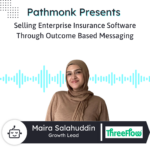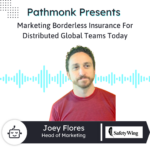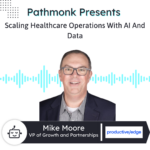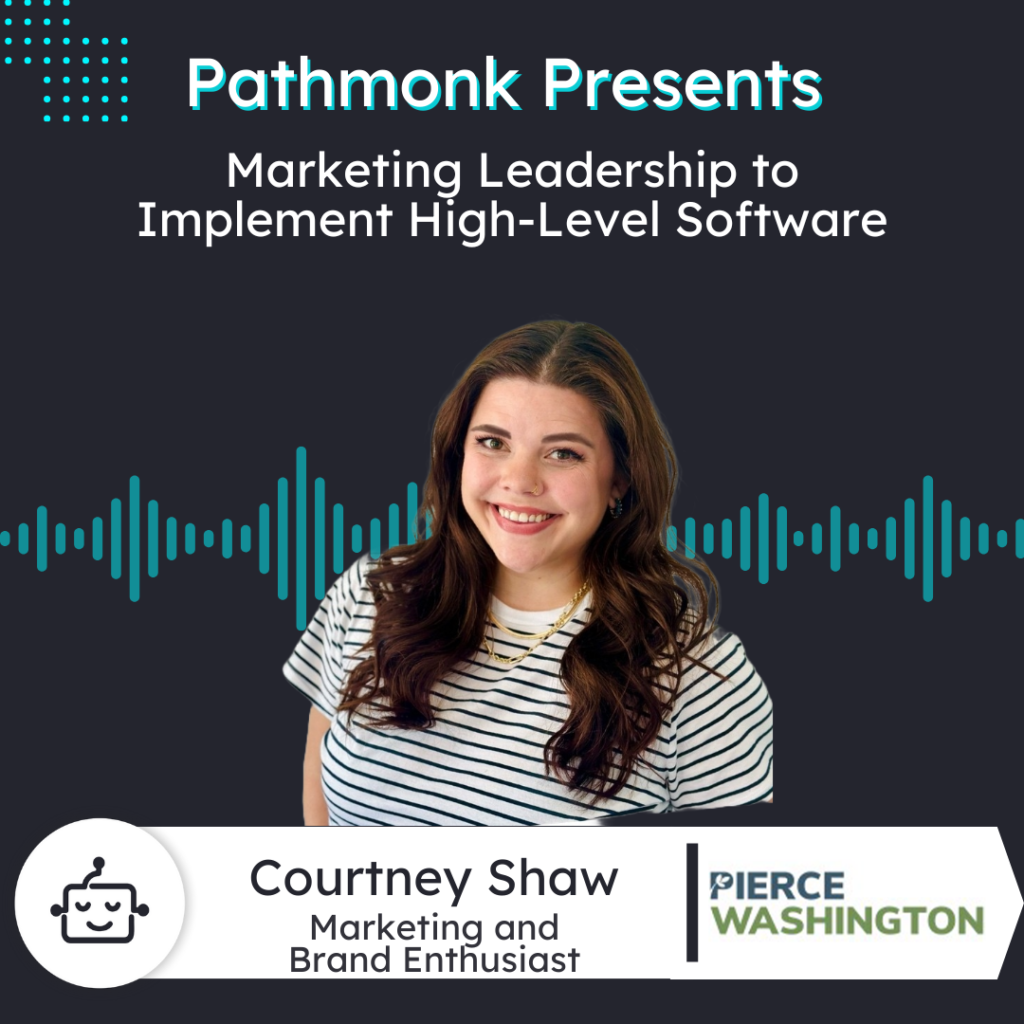
Introduction
In this episode, we welcome Courtney Shaw, Marketing Manager at Pierce Washington, a systems integrator specializing in implementing high-level software for enterprise companies.
Courtney shares insights on how Pierce Washington transforms the quote-to-cash business process for manufacturers, life sciences, and high-tech companies. She discusses their focus on Salesforce and Oracle implementations, the importance of partner and referral-based client acquisition, and the evolving role of marketing in their business.
Courtney also offers valuable advice for marketers, including the importance of trusting one’s instincts and navigating imposter syndrome in leadership settings.
More Sales From Your Website With AI
Personalized interactions based on your users' behaviour to get +50% more conversions.
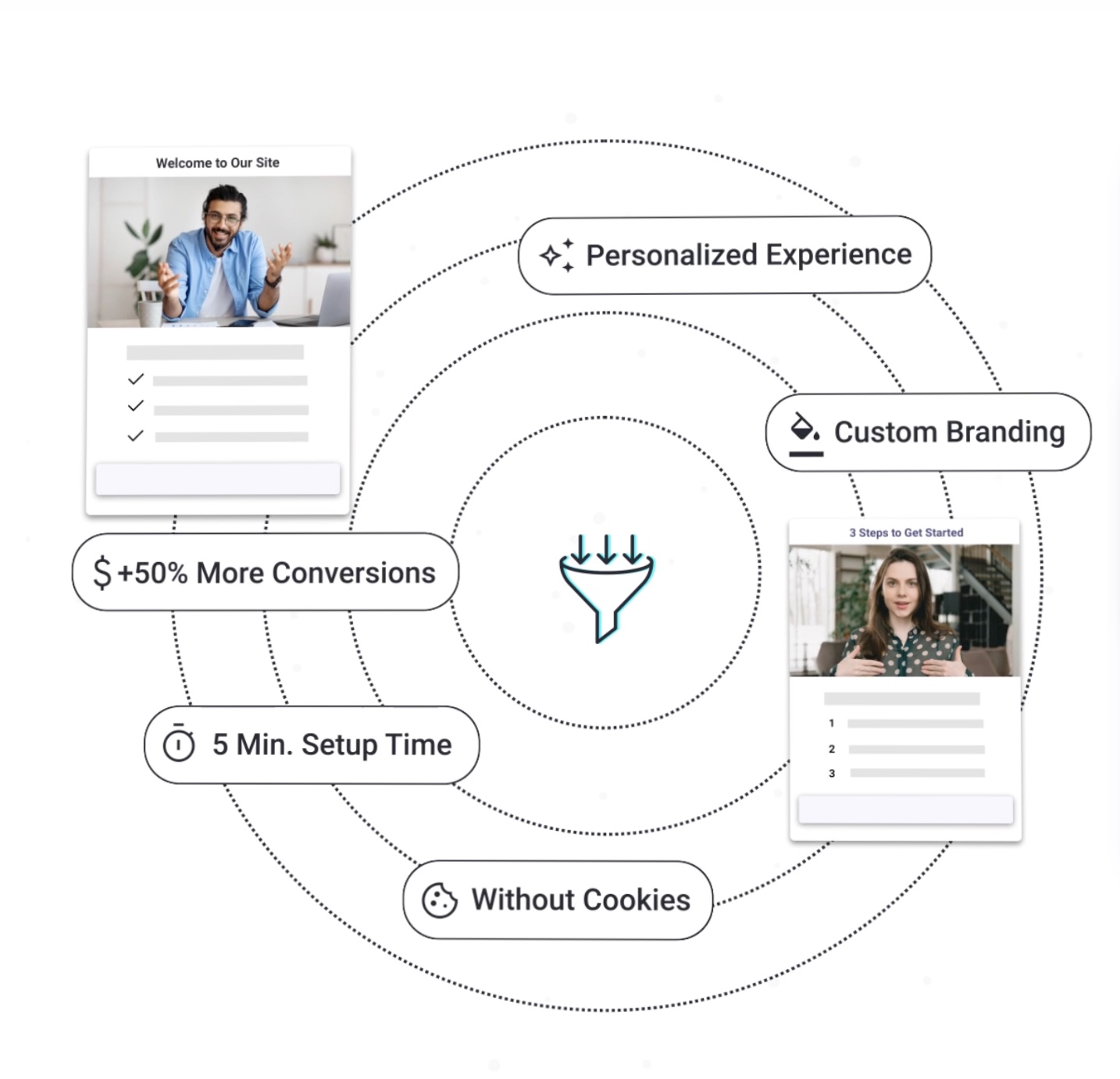
Ernesto Quezada: Pathmonk is the intelligent tool for website lead generation. With increasing online competition, over 98% of website visitors don’t convert. The ability to successfully show your value proposition and support visitors in their buying journey separates you from the competition online. Pathmonk qualifies and converts leads on your website by figuring out where they are in the buying journey and influencing key decision moments. With relevant micro experiences like case studies, intro videos, and much more, stay relevant to your visitors and increase conversions by 50%. Add Pathmonk to your website in seconds. Let the AI do all the work and get access to 50% more qualified leads while you keep doing marketing and sales as usual. Check us out on pathmonk.com. Welcome to today’s episode. Let’s talk about today’s guest. We have Courtney from Pierce Washington, marketing manager with them. How are you doing today, Courtney?
Courtney Shaw: I’m good. Happy to be here.
Ernesto: It’s great to have you on today’s episode here at Pathmonk Presents. Well, I’m sure our listeners are tuning in, wondering what Pierce Washington is all about. So Courtney, let’s kick it off with that, right? In your own words, can you tell us a little bit more?
Courtney: Yeah, sure. So Pierce Washington is a systems integrator. What that means is, you think of a large enterprise company and they go out and purchase a really high-level piece of software like Salesforce Sales Cloud or Oracle Configure Price Quote. Well, they don’t actually install or implement that software themselves. They look to partners, and that’s where we come in. We really focus on taking a high-level piece of software and implementing it into the organization’s system, making sure it all works together, training, all of that good stuff.
Ernesto: That’s important, right? It’s not cheap, so you definitely have to have everything ready to go, right?
Courtney: A lot of times they don’t. That’s where we come in.
Ernesto: And so that way our listeners could get a good understanding of Pierce Washington, what would you say is that key problem that you guys like to solve for clients?
Courtney: Yeah, so we really focus on the quote-to-cash business. So when you’re thinking of a company like GE, for example, right, they have a bunch of different arms of their business. The area that we really focus on is their B2B experience. And so really everything involved in that lead-to-quote, to order, to fulfillment process is really our expertise. We primarily implement Salesforce, you know, Commerce Sales Cloud, Oracle Commerce Cloud, those sorts of technologies that really transform how a company connects to their customers, partners, or distributors, right?
Ernesto: Definitely. And talking about some vertical segments, do you have an ideal ICP? I mean, those are big companies, they have a lot of verticals. But is there a specific vertical that you guys like to go for?
Courtney: Yeah, so we really focus on enterprise. For us, that’s like their ARR is 500 million up a year. Within that, our key verticals are manufacturers, because they have very complex selling processes. You look at life sciences, like Thermo Fisher, where they manufacture goods and technology. Also, high-tech companies like NetApp or ADP struggle with a lot of the same things as manufacturers in selling their services or products. So that’s really where we sit—manufacturing, life sciences, and high-tech.
Ernesto: Perfect, awesome. Thank you so much for sharing that information.
Courtney: Of course.
Ernesto: As you mentioned, these verticals you guys focus on are high-tech, life sciences, and manufacturing. How would they usually find out about Pierce Washington? Is there a top client acquisition channel for you guys?
Courtney: Yeah, the SI space can seem very convoluted and competitive, right? Really, a majority of our acquisitions and leads come from our partners. We have two cornerstone practices—one with Salesforce and one with Oracle. A lot of times our leads come from those partners where they are looking to implement with a partner that they just sold software to, and we come in as the implementation partner. We are often very involved in the deal cycle as well, helping them sell their software. Aside from partners, it’s a very referral-based business. We get a good portion of our leads and new customers from current customers, like when a key contact at one of our cornerstone customers moves to a different organization and says, “I want to work with Pierce Washington again.” So we are very much referral-based and heavily influenced by our partner channels.
Ernesto: That’s great to hear. And on that note, for our listeners who are tuned in, they can visit you at piercewashington.com. What role does the website play for client acquisition?
Courtney: Yeah, we’re kind of in a transition period where we’ve been so partner and referral-based for so long that we never really had a strong demand gen engine. We’re working on growing that out now, balancing those scales a little bit, and really turning marketing into a revenue center, which it hasn’t been historically. The website acts as our one-stop shop for who we are. We’re not necessarily getting a high volume of demo requests or selling t-shirts, so we’re not really converting people on the website. It’s more of a place where they do their research and decide whether or not we’re a credible organization. So much of the buyer experience is them researching before they get to us. That’s really the role our website plays—demonstrating our expertise and thought leadership, and building trust and credibility.
Ernesto: Definitely important. Great, thank you so much for sharing that with us, Courtney. Let’s switch gears a little bit and talk about you as a leader. You’re the marketing manager there at Pierce Washington. What are some key tasks you like to focus on in your day-to-day work?
Courtney: Yeah, I’m a marketing team of one. I’ve been a marketing team of one at my last couple of roles, and when you’re a full-time marketing team of one, you do a little bit of everything, which is what I like. I do everything from overall campaign strategy, content creation, social media, go-to-market assets, website maintenance, and managing our vendors and contractors. While I’m a full-time team of one, I have a network of contractors that I work with that make my job possible. That’s definitely been a key part of my role—building that team of vendors around me that I trust and who can execute on more tactical things while I handle a lot of the strategy but also try to get things done, like webinars, right?
Ernesto: Absolutely, it sounds like you have a full plate on your hands. You already have the experience from previous jobs, so you’re able to handle all that—awesome to hear. So on that note, Courtney, how do you stay up to date with all the new marketing strategies and trends out there? Is there a preferred channel that you like to go with?
Courtney: Yeah, there are so many, you know, like you could go to about a million and five different places. For me, LinkedIn is really my primary learning place. I have really cultivated a network of thought leaders. I follow a lot of technologies that I use on LinkedIn because those are typically the organizations that have the budget to do lots of research into thought leadership pieces or trends for industry reports. So I follow a lot of product leaders, industry leaders, and colleagues. I really do use LinkedIn as a good source for that from a lot of different channels within that. But then also, colleagues—we’ve got to bond, right? We go through it sometimes. Having those people and YouTube probably going to share those war stories with, or even just the other day, I called one of my marketing colleagues and asked if they were having the same problem as me, and she was like, “Yeah, that’s a problem right now.” So just kind of spot-checking with your people you trust is definitely a huge thing for me. Also, industry groups and association groups are a great way to meet people outside of who you talk to all the time. I do interact with a lot of industry and association groups like AMA and stuff like that.
Ernesto: Perfect, thank you so much for sharing those channels with our listeners. Let’s jump into our next section, Courtney, which is our rapid-fire question round. Are you ready for them?
Courtney: I’m ready.
Ernesto: All right, perfect. First off, Courtney, what is the last book that you read?
Courtney: Well, for work or just for fun? One of my go-tos is “Designing Brand Identity.” It’s actually like a curriculum textbook, but I have it on my shelf right there. Whenever I’m really stumped, I go back to that. But for more fun, obviously, I like to read—if you can see behind me. One of my more recent fun reads is a fiction book called “Iron Flame.”
Ernesto: Definitely. Thank you so much for sharing that with us, Courtney. Next up, if there were no boundaries in technology, what would be that one thing that you want to have fixed for your role as a marketer today?
Courtney: Debunking the mythical algorithm. I feel like every time I turn around, there’s a new algorithm that I have to be mindful of. I feel like as a marketer, we’re constantly chasing, trying to be ahead of technology changes. How do I manage updates to the Google algorithm, which can really impact my brand visibility on search? How do I manage changes to the LinkedIn algorithm? Because that changes all the time—how LinkedIn prioritizes and rewards content. There are just so many different ones, and you ask anyone, and they’re like, “Oh, it changed. There was an update last week.” So yeah, debunking the algorithm and maybe just getting rid of it.
Ernesto: Yeah, that’s a good one. Next, Courtney, if there’s one repetitive task that you could automate, what would that be?
Courtney: Probably updating content. I feel like whenever I make a change to wording or branding, I would love it to immediately translate to every single piece of content or place that it lives on my website. Especially for us right now, we’ve been around for 19 years, but for about 17 of those, we were all-in on Oracle. Well, over the last two and a half to three years, we’ve launched a Salesforce practice, which is a big change to our messaging and brand. When we initially launched that, we were very conscious of not upsetting the other side of the house. Oracle and Salesforce are direct competitors. While it’s not unusual for a company like us to do both, you still have to balance that—you don’t want to upset either side of the house, and they’re both really important to us. When we first did that, we didn’t really claim either. We didn’t really say Oracle, we didn’t really name Salesforce; we just said, “We do quote to cash.” Now, as we’re evolving, we need to claim both as our expertise. We’re at the point now where our Salesforce practice has been up for at least two years, and we’ve started to go back and update that language to be really clear about what we do and to claim our expertise. But that language lives and breathes in pretty much every piece of content or asset we’ve put out in the market over the last two years, so going back in and updating that and maintaining that is a lot. I would love it if, with the snap of a finger, I could make a change of color or word on one thing, and it would change everywhere.
Ernesto: Definitely, that would be really interesting. If there’s somebody out there, contact Courtney, right?
Courtney: Yeah, please.
Ernesto: Lastly, Courtney, what is one piece of advice you would give yourself if you were to restart your journey as a marketer today?
Courtney: Probably to trust my instincts a little bit more. As a marketer, we’re kind of on that line, at least in the more strategic side of marketing, where we’re kind of like salespeople, but we don’t actually want to sell. I love taking it all the way up and then making someone else close the deal. A lot of it gets construed as, “Oh, you should be a salesperson; you would be a great salesperson.” I think a lot of times we get pushed into possibly going into sales or outside of marketing, but I’ve just found that this is what I love. So trusting my instincts. Also, you don’t have to be the loudest to prove that you deserve to be at the table. I’m obviously a little earlier in my career, and I’ve been fortunate enough to work with senior leadership a lot throughout my early career. Being really close to CEOs and high-level executives is something a lot of young marketers don’t get, and when you’re in those situations, imposter syndrome is a real thing—it’s coming for you. I think a lot of times in those situations, you feel like you have to prove that you deserve to be at the table, that you deserve to be in those conversations, especially when you are maybe the only one in that room under 35 or the only one in that room who’s a woman. I’ve learned throughout the last ten or so years that I don’t have to be loud to prove that I’m there and that I deserve to be there. Again, it goes back to trusting my instincts more.
Ernesto: Definitely important—some great advice, not just for yourself, but for our listeners out there. Thanks so much for that, Courtney. We are coming to the end of the show today, Courtney, here at Pathmonk Presents. But before we end, I do want to give you the last word. If someone forgets everything about the interview today, what is that one thing they should remember about Pierce Washington?
Courtney: We transform how companies connect to their customers, and we’ve been doing it for 20 years. While we focus on a more specific part of the business of quote to cash, our expertise is what really sets us apart. We handle complex projects, and we’ve been doing it for a long time.
Ernesto: Definitely important, and you can always check them out at piercewashington.com. Thank you, Courtney, for being on with us today. And to our listeners, thank you so much for tuning in. I’m looking forward to our next episode at Pathmonk Presents. Thanks a lot, Courtney.
Courtney: Thanks.




